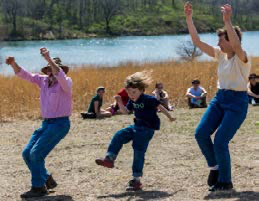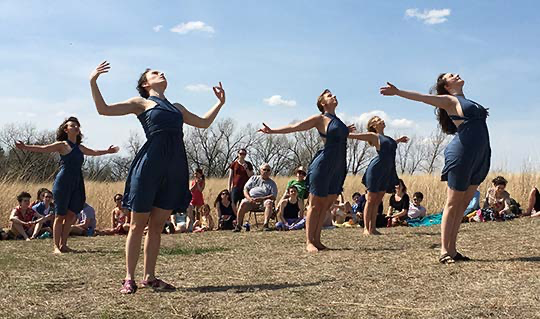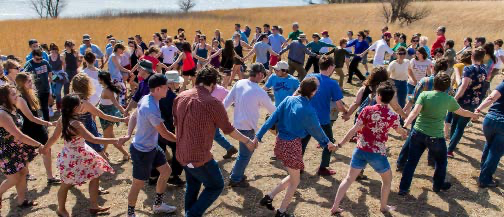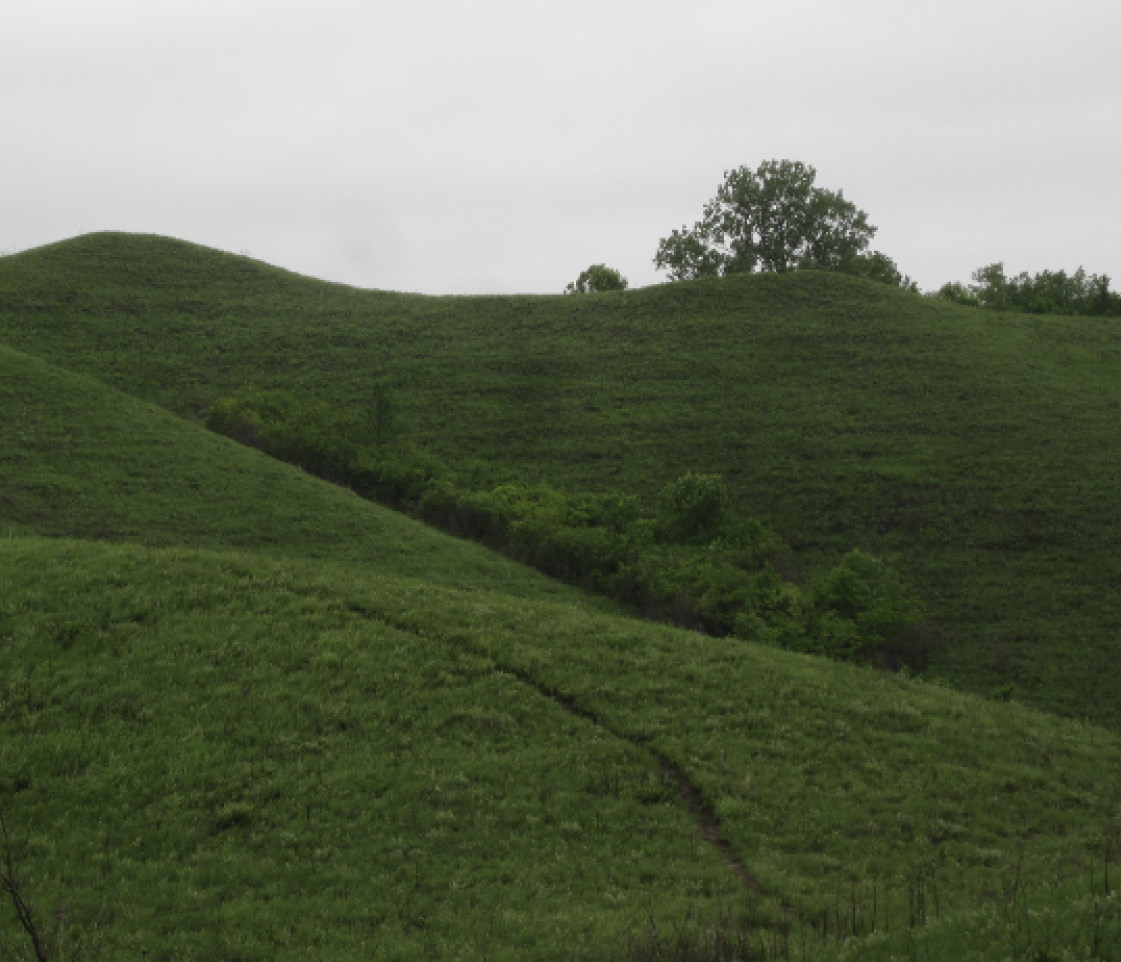As we tap into the deep sources of bodily wisdom through creative art expression, we dance the renewal, recreation, and healing of ourselves and our world.
The National Water Dance, a series of site-specific events across the country, brings attention to the pressing issues of water in the United States through embodied action. The National Water Dance evolved out the Florida Waterways Dance Project in 2011. It now involves 100 sites in more than 35 states this year. Dale Andree, project founder, says: “The National Water Dance believes our environment is the most urgent issue of this generation and that artists need to take the lead in addressing it. As dancers we want to use our bodies to create a community that cries out for action.”
Ivy Kuhn, a senior Dance and Theatre major at Grinnell College, coordinated and choreographed Grinnell’s Water Dance at the College’s Conard Environmental Research Area (CERA), a 365-acre field station with a restored prairie landscape that is located eleven miles northwest of the college. As a member of the National Water Dance Organization, Kuhn became engaged in a national conversation exploring how site-specific dances relate to nature, local communities and natural landscapes. She believes the greatest strengths of site-specific performance include the opportunity it gives to both performers and audience to engage in a conscious decision to be present through breath and intention in a shared experience.

Photo courtesy of John Brady
Kuhn studies Somatic and Site-Specific choreography, and was drawn to the National Water Dance as a platform appropriate to creation of an environmental piece outdoors which specifically addresses the importance of place in the process of choreographing. She chose CERA as the right setting for her work after reading an entry in the Iowa Academic Journal regarding Iowa’s prairie: “In 1850, 80 percent of Iowa was prairie and oak savanna. Today, over 99.9 percent of that original prairie is gone.” In her dance work entitled Blue, which derives its name from Big Bluestem, a species of grass native to the prairie region, Kuhn and an ensemble of four other student dancers use a vocabulary of gestures illustrative of sinking, wrapping, and gravity to create patterns of meditative, expressive movement that portray the expansive ability of prairie plant’s root systems to gather and retain water.

Photo clip from Blue, performed by Ivy Kuhn, Jill Wielgos, Anna Hicks, Maddi Danks, and Naomi Worob. Photo courtesy of John Brady.
In addition to choreographing her original piece, Kuhn taught a lexicon of simple movement phrases to community members and students at several locations around town, recruiting performers of all ages to take part in the dance to raise awareness about the importance of water in our everyday lives.
On Saturday, April 16th, 2016, a crowd of over 100, composed of community members, students, and families, gathered in the sunny and windy prairie to celebrate water and connection to place. Through the conscious act of dancing and sharing in a celebration of nature and the prairie, Kuhn hopes that community members walked away feeling connected, restored and inspired to take action.

Photo from performances by community members from the Mayflower Residence community, Drake Community Library and Grinnell College. Photo courtesy of John Brady.
For more information, or to view other National Water Dance Sites, go to NWD Projects.

Untitled photograph by Justin Hayworth

